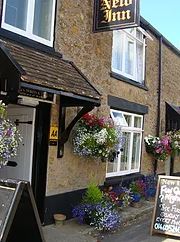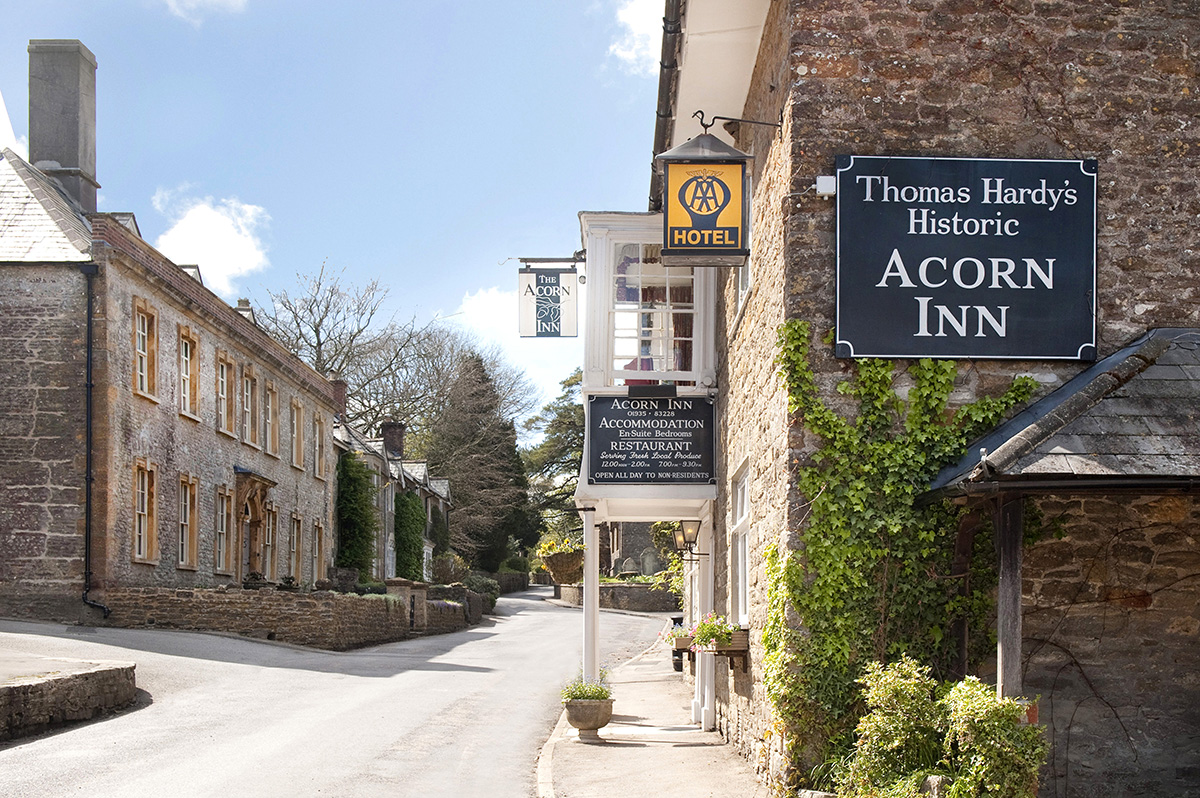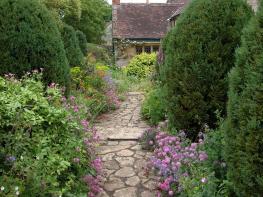Dating back to the 16th century, The Masons Arms claims to be the oldest building in this small…
Montacute

High Wood to Ham Hill with unexpected views of Montacute House
5 miles (8kms)
About the walk
With a history rooted in an Iron Age fort, a Norman motte and bailey and a Cluniac monastery, Montacute is as pleasing as any village in the county, but it is to Montacute House that visitors are drawn. Set cheek by jowl with lowly cottages, it is a grand country house, built at the close of the 16th century and a wonderful example of Elizabethan Renaissance architecture.
It was created by Sir Edward Phelips, an influential and successful lawyer and politician, whose family had been around Montacute since the 15th century. The house is an unashamed expression of his wealth and standing. Following the basic 'E' plan of the time, it originally set its face to the east, overlooking a courtyard and splendid avenue across the park. There is an elegant symmetry in its gables, windows and decoration, while inside is an impressive grand hall and a long gallery that extends the full width of the top floor. Such spaces enabled the family and guests to exercise during inclement weather, but stories of the children taking their ponies up the stairs suggest a very liberal household.
The only major alteration to the house was made during the 18th century by another Edward. He effectively turned the house around with a new façade built between the projecting west wings using stone from the demolition of Clifton Maybank in Dorset. It also created the convenience of a corridor, since previously one room had simply led into the next.
The family's fortune disappeared at the end of the 19th century when William Phelips developed an addiction to gambling. His son inherited to find nothing left for the maintenance of the estate and it was eventually offered for sale. But the end of the Great War had wrought a massive change upon society and, in the end, it was bought at scrap value by Edward Cook, whose grandfather Thomas founded the famous travel company. He gave the house to the National Trust, which has gradually restored it to its former glory.
An abandoned village
By way of complete contrast, the walk passes the site of the abandoned village of Witcombe. Once a small hamlet crouched by a seeping spring in the sheltering fold of a valley, it makes an appearance with a scant reference in the Domesday survey. An imaginative eye will give substance to the hillside strip lynchets and the raised mounds of house platforms, clustered around a reedy marsh that was once the village pond. Despite the settlement's isolation, Witcombe provided its inhabitants with a living for some 600 years before being finally abandoned in the 17th century, perhaps to make way for the sheep that now graze the valley.
Walk directions
From the square facing the Phelips Arms, follow the main street left. At the church, go left again in front of The Kings Arms Inn and keep ahead past Abbey Farm along a private road to Hollow Lane. There, turn right but leave immediately through a kissing gate on the right. Climb above the lane at edge of fields, rejoining it at the top of the hill.
Take the track opposite but, just beyond a gate, swing through another on the right and follow a slanting trod down the hill side towards the site of the lost village of Witcombe. Walk along the base of the valley, leaving through a gate at the far end. Drop left, crossing a track to a kissing gate. Swing right at the bottom of a pasture to another gate, from which a path winds through High Wood around the base of a hill. Ignore paths off right and left as you curve around the snout of the hill, eventually leaving the trees behind to emerge over a stile by a gate into a field. Make for a field track at the far side and follow it uphill. Through a gate, continue over the crest to find a stile on the right. Drop through trees to an old track below, known as Hocker's Hill.
Follow it right for 0.75 mile (1.2km) to a junction and go left. At a later fork keep left again, eventually joining a drive to emerge onto a lane at Five Ashes.
Cross to a track opposite signed to New Road, leaving after 150yds (137m) over a stile on the left by the corner of a high stone wall. Continue with the right fence to another stile at the bottom from which a path falls steeply into trees. Swinging right lower down, contour round to emerge in a field and keep ahead past a dilapidated hut and along a fringe of trees. Reaching a lane, go left and left again along the main road to a bend by Odcombe Lodge.
Just beyond, turn in through impressive gates into Montacute Park. Head away along an avenue of oak, at the end of which is a classic view to the original east front of Montacute House. Retrace your steps a short distance to a waypost and swing right past a redundant stile towards the village. Leave the park through a gate beneath an ancient oak, from which a short path leads onto a back street. Go right and left to come out onto the main street, turning right past the TV, Radio and Toy Museum back to the main square.
Additional information
Wood and field paths, short stretches along lanes
Rolling fields and wooded hills
Dogs on leads near grazing animals
AA Leisure Map 12 Taunton & Lyme Regis
In Montacute village square
None on route
WALKING IN SAFETY
Read our tips to look after yourself and the environment when following this walk.
Find out more
Also in the area
About the area
Discover Somerset
Somerset means ‘summer pastures’ – appropriate given that so much of this county remains rural and unspoiled. Ever popular areas to visit are the limestone and red sandstone Mendip Hills rising to over 1,000 feet, and by complete contrast, to the south and southwest, the flat landscape of the Somerset Levels. Descend to the Somerset Levels, an evocative lowland landscape that was the setting for the Battle of Sedgemoor in 1685. In the depths of winter this is a desolate place and famously prone to extensive flooding. There is also a palpable sense of the distant past among these fields and scattered communities. It is claimed that Alfred the Great retreated here after his defeat by the Danes.
Away from the flat country are the Quantocks, once the haunt of poets Samuel Taylor Coleridge and William Wordsworth. The Quantocks are noted for their gentle slopes, heather-covered moorland expanses and red deer. From the summit, the Bristol Channel is visible where it meets the Severn Estuary. So much of this hilly landscape has a timeless quality about it and large areas have hardly changed since Coleridge and Wordsworth’s day.
Nearby stays
Restaurants and Pubs
Nearby experiences
Recommended things to do
Why choose Rated Trips?
Your trusted guide to rated places across the UK
The best coverage
Discover more than 15,000 professionally rated places to stay, eat and visit from across the UK and Ireland.
Quality assured
Choose a place to stay safe in the knowledge that it has been expertly assessed by trained assessors.
Plan your next trip
Search by location or the type of place you're visiting to find your next ideal holiday experience.
Travel inspiration
Read our articles, city guides and recommended things to do for inspiration. We're here to help you explore the UK.













